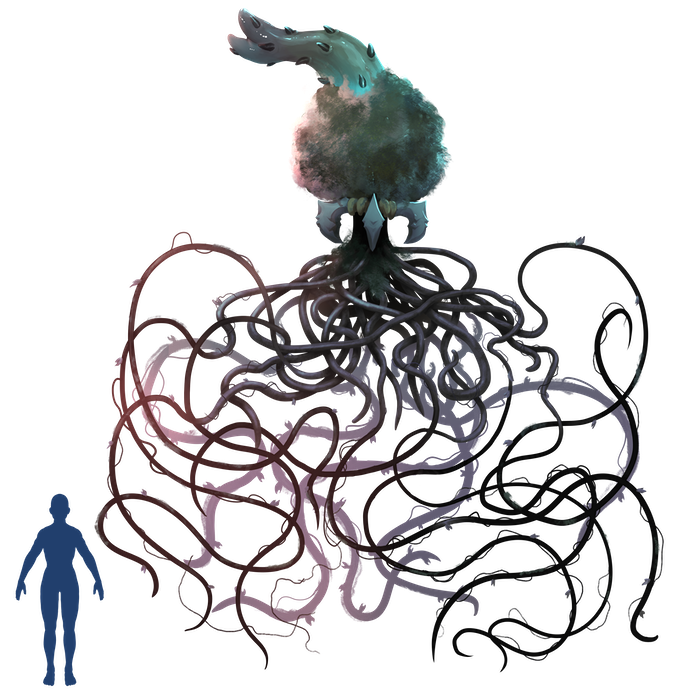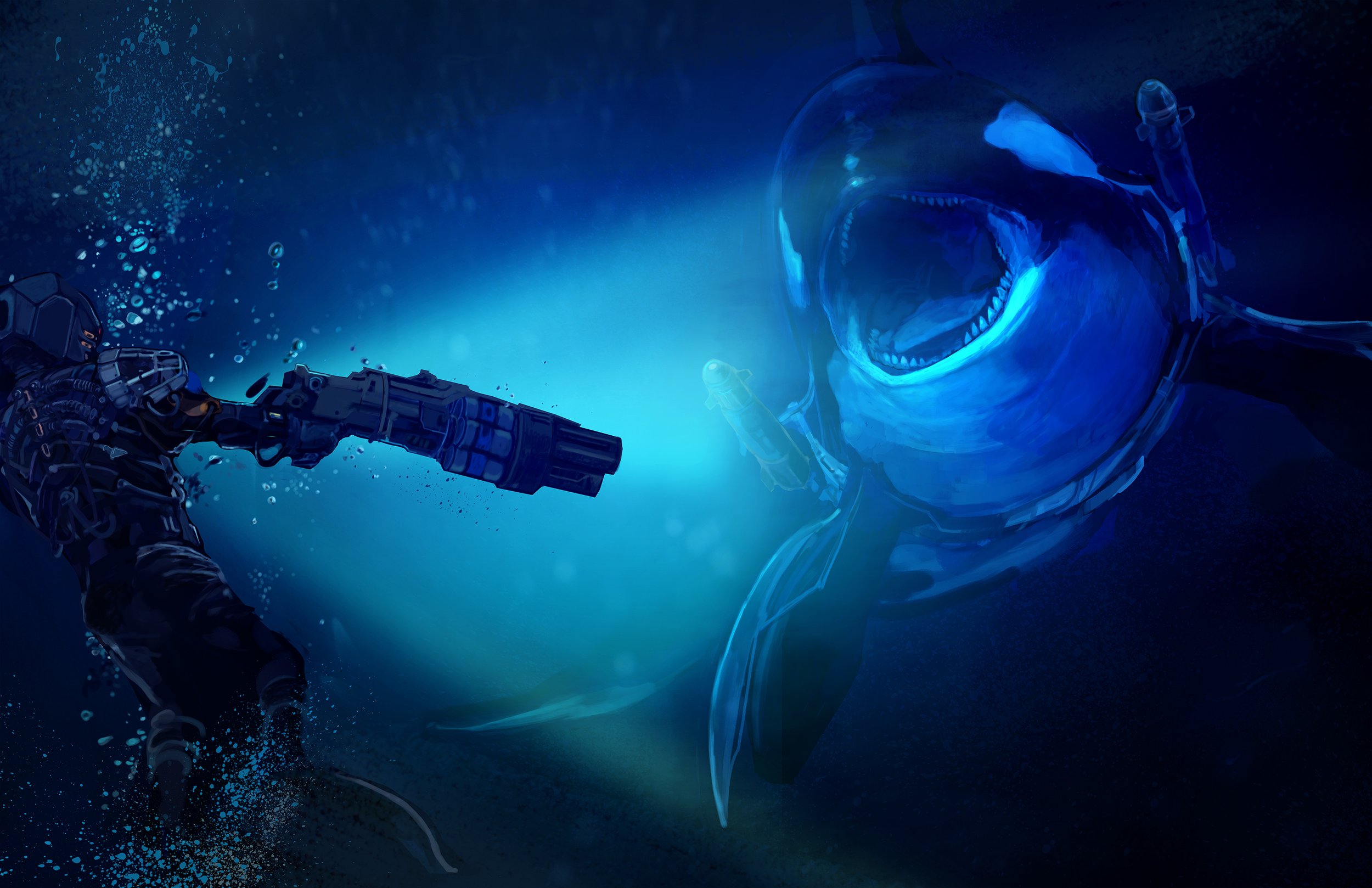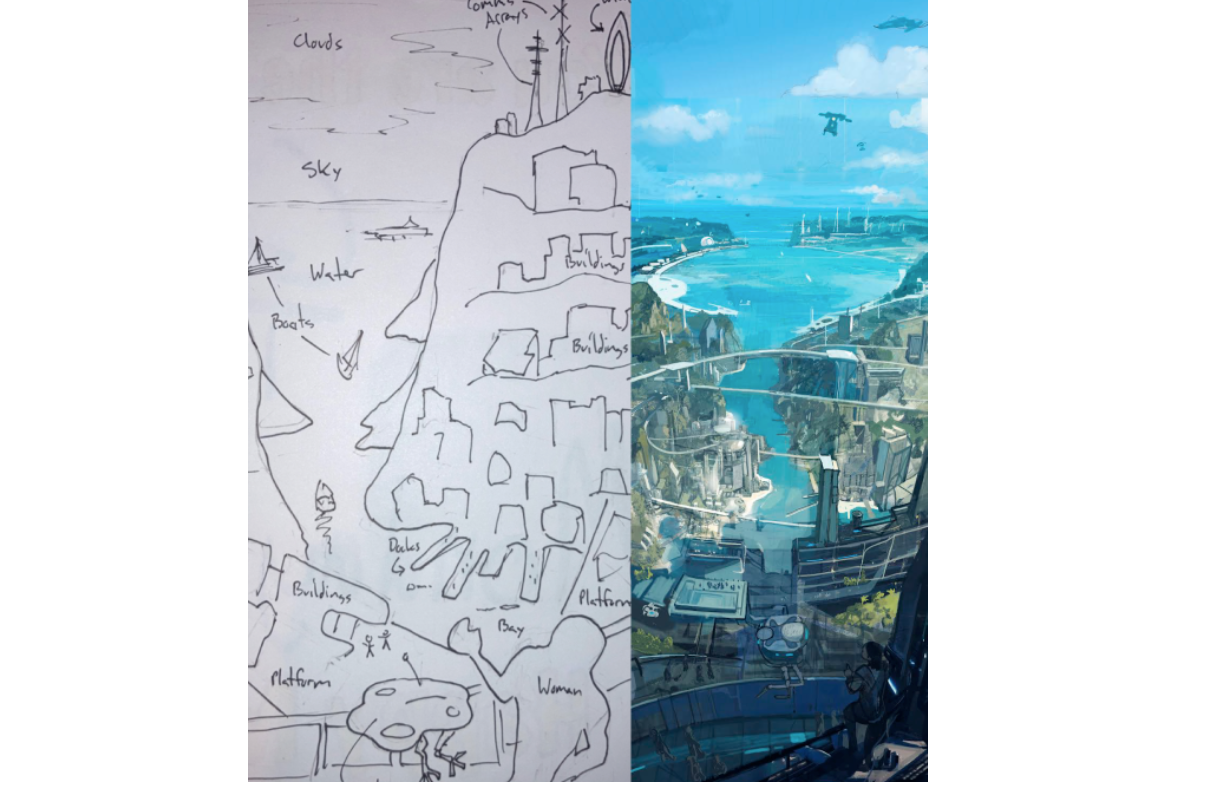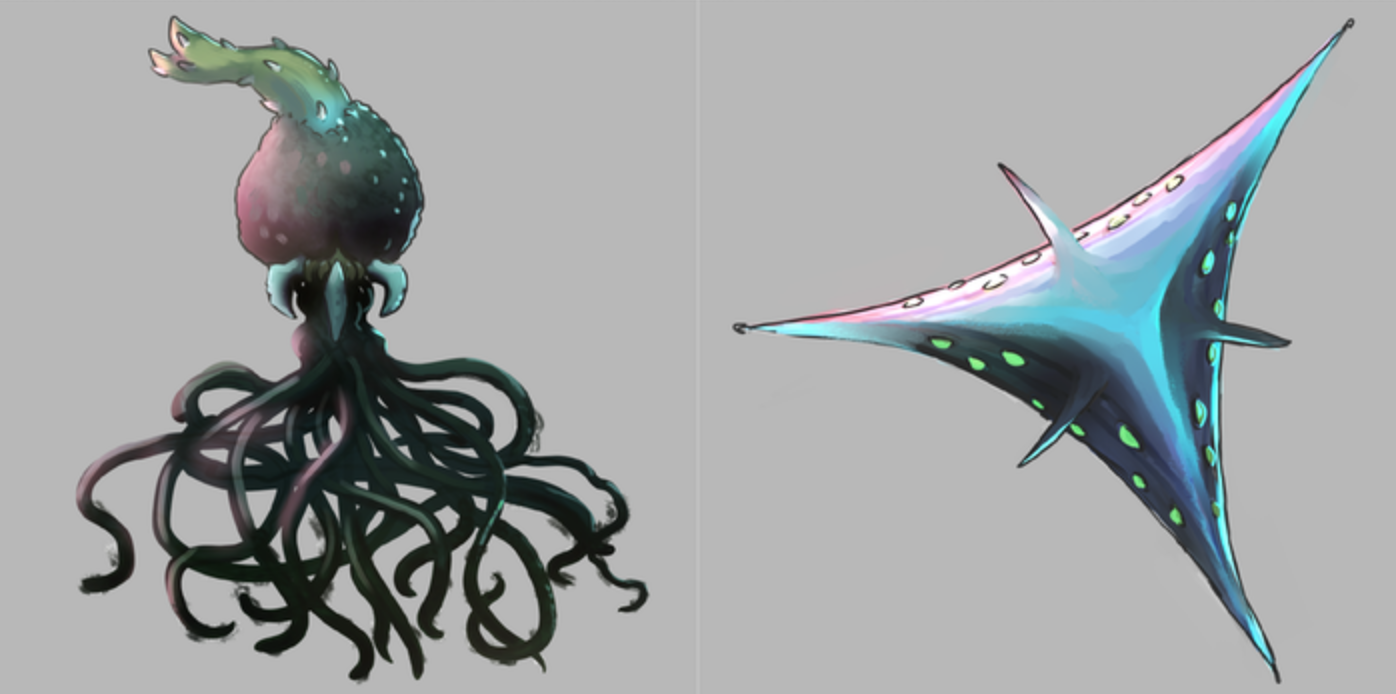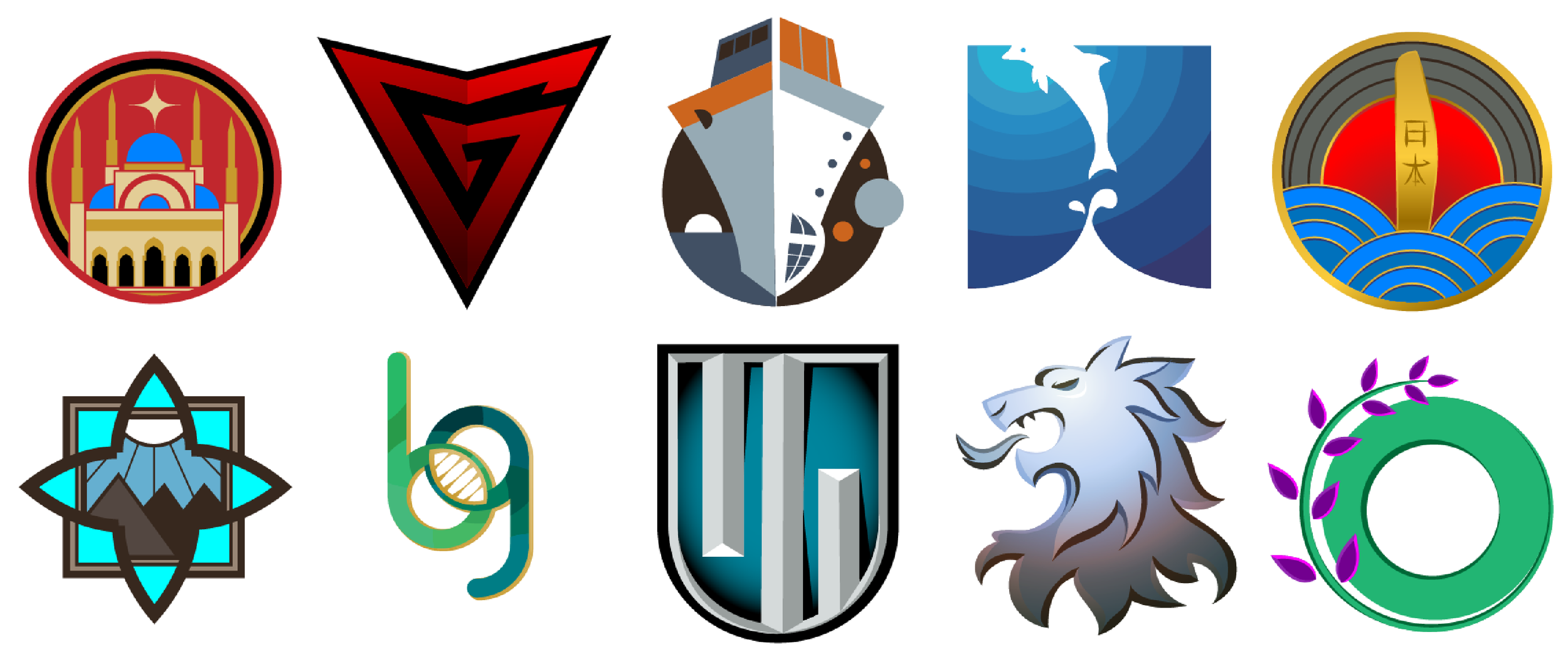April was a good month for Blue Planet tech art, as the illustrations below attest. The first is an example of a heavy-lift orbital cargo shuttle making a water launch after refueling via its onboard hydrogen cracking plant. The second is of a sample of long john as it transitions from raw form to processing to medical-grade wafer. The third is a spot illustration for the equipment chapter - the first from Vitaliy. I think it's awesome, and I can't wait to see what he does with the rest of the commissions.
Cetacean Power Shell
In an effort to provide cetaceans with superior speed, range, and functionality, engineers at Hydrospan have developed a line of MHD sleds for use by the various cete species. The devices are essentially part hard suit, part open submersible.The user slips into the formfitting cowling, which snugs securely about their body. Oversized MHD drives provide superior speed and power. Sensitive linkages relay the pilot’s own instinctual muscle movements to the finlike rudder surfaces, allowing subtle, active control of the fast and nimble craft.
Power shells are essentially sleek minisubs that lack pressure hulls.They therefore increase a cetacean’s speed, endurance, and cargo capacity, but not their depth limits. Standard designs provide artificial gill life support as well as a variable suite of sensory and communication equipment. Interfacing with the onboard systems is usually accomplished through sonic trodes.
Most designs sport hardpoints where small cargo pods or weapon systems can be attached. Smaller cete versions typically have two, while larger pilot and orca shells can have up to four. Because power shells are inherently streamlined, each occupied hardpoint reduces the craft’s chase/evade ratings by 1.
Power shells are generally constructed of various bioplastic and ceramic composites. Most smaller cete shells are powered by rechargeable batteries, while orca shells are charged by small fuel cells. It’s a matter of public record that the GEO has contracted a line of military grade power shells with integrated weapon systems and armored cowlings. Therefore, it won’t be long before paramilitary power shell models are available on the open market.
DIMENSIONS: 320 kilograms and 4 meters long
DURABILITY: 1
POWER SOURCE: rechargeable batteries or fuel cell, MHD drives
FUEL RANGE: 800 kilometers/charge
CAPACITY: 1 rider/pilot, 200 kilograms divided among cargo pods
AVAILABILITY: uncommon
FEATURES: autonomous, hard points, sensors, warm interfacing
COST: 60,000cs
MODELS: Hydrospan Porpoise, Hydrospan Spyhopper, Hydrospan Hunter/Singer
MANEUVER MODS: Attack: 0 Defend: 2 Chase/Evade: 4 Performance: 2
Day Jobs and Delays
April was not a good month for my own production goals, however, and this spring has been too slow in general. Though Rachel continues her editing apace, Mark is killing it with the maps, great freelance assignments have come in and the first section is off to the layout artist Thomas Deeny, my own work has been waylaid by my day job.
Most of you probably don't know, but IRL I am a science teacher turned mostly administrator. I manage the boarding program at a small independent school, which means I am responsible for the daily lives of about 125 teenagers from all over the world. To say it is a time consuming job under normal circumstances is an understatement, but life under COVID has only made it ridiculous - I frequently work 15 hour days, and yesterday was my first day off in six weeks. So, you can imagine finding the time and energy to work on Blue Planet is often hard if not impossible and the reason why we are not as far along on the project at this point as originally planned.
Though the lives of writers of indie, hard sci-fi RPGs about the woes of colonizing water worlds may seem like it's all pristine alien beaches, glorious ocean sunsets and piles of Incorporate cash, my day job usually has to take priority if I am to keep body and soul together. Despite the long john boom, there's little money in RPGs, and game production is a slow, often tedious side-gig and requires extra time, energy and focus that are not always available.
Suffice it to say that I continue the work as my schedule and energy allow, and despite the delays, the game continues to take shape. Thank you for your understanding, support and ongoing patience.




